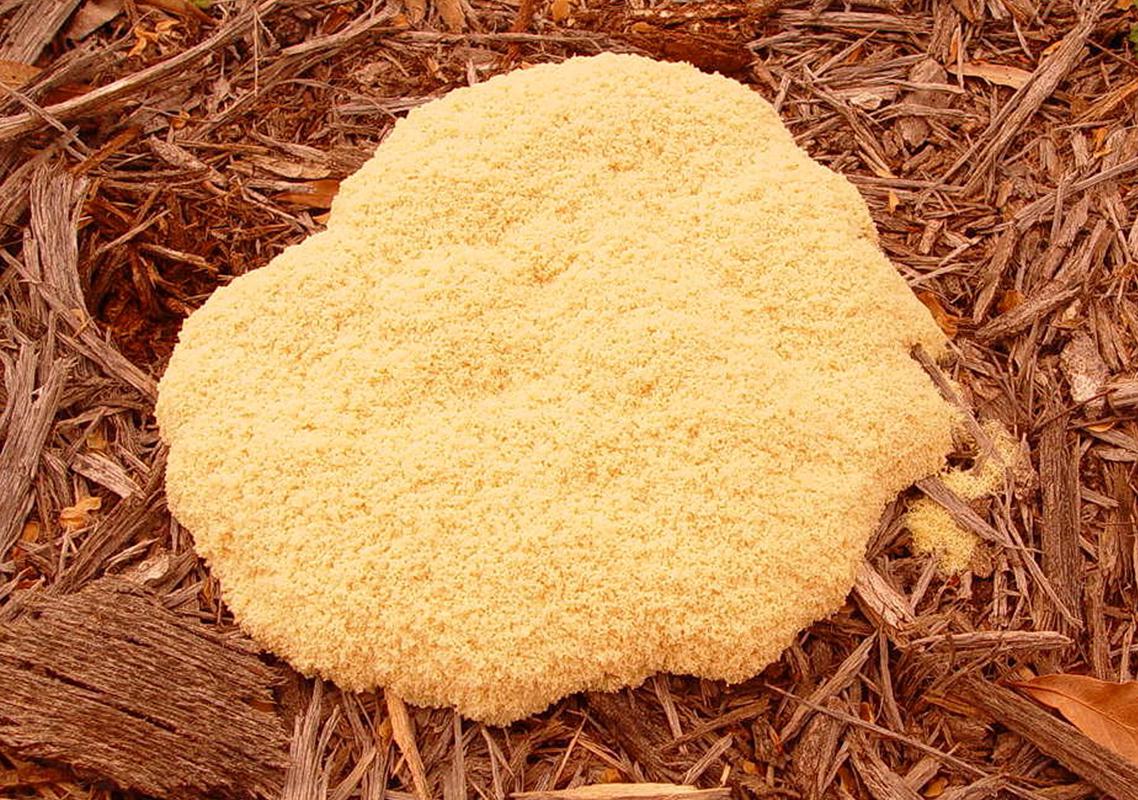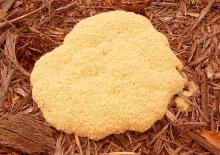Information Possibly Outdated
The information presented on this page was originally released on June 7, 2007. It may not be outdated, but please search our site for more current information. If you plan to quote or reference this information in a publication, please check with the Extension specialist or author before proceeding.
Harmless orange slime mold found in gardens
MISSISSIPPI STATE -- Many gardeners across the state are shocked by sprawling, bright orange masses that appear quickly in gardens, but this scary looking fungus is quite harmless.
Clarissa Balbalian, plant diagnostic lab manager with the Mississippi State University Extension Service, said the fungus is a slime mold that feeds on decaying woody material.
“It doesn't hurt plants or people,” Balbalian said. “Slime molds live on fungi, bacteria and other microscopic creatures that decay organic material.”
Balbalian said this fungus is usually found on the ground and looks like orange dog vomit. It is lumpy and flat, and its color can range from pink to red or orange. It starts out moist, but dries to form a hard crust as it matures. Inside are dark black, powdery spores.
“It typically likes a bit of moisture, so it is common to see it in areas that are irrigated,” Balbalian said. “In Mississippi, we could have it all the time, but it is less common in cooler weather.”
She said this slime mold will dry up and disappear in time, but can be picked up and discarded. Try not to break the mass open to prevent the further spread of spores.
Balbalian said this mold is common in mulch and any kind of dead, organic matter. Many people find it in their flower or shrub beds that have been mulched.
“There is nothing you can do to prevent getting it other than not have wood mulch or any dead organic materials around,” Balbalian said. “There is no spray you can use to kill it, and the best way to get rid of it is to use a shovel to lift it and throw it away.”
Norman Winter, Extension horticulturist, said despite the possibility that it will host mold, mulch serves a valuable purpose in landscapes.
“Mulch prevents the loss of moisture through evaporation, and it also helps prevent weeds, which compete for the nutrients and water you're trying to get to the plants you want to grow,” Winter said. “By preserving moisture, you're preventing cracks that can lead to shifting foundations and other problems.”
Balbalian said another type of slime mold forms gray balls on grass blades that are wet for extended periods. This mold feeds on decaying organic matter and does not harm the grass, but simply uses the blades for support.
As manager of the MSU Plant Pathology and Nematology Lab, Balbalian sees these kinds of fungus and many other microorganisms and parasites that attack Mississippi plants. Last year, the lab analyzed about 700 disease samples and tested about 1,700 samples for nematodes.
The lab serves large-scale farmers, commercial growers and homeowners with plant problems. It is the diagnostic lab for the Mississippi Department of Agriculture and is part of the Southern Plant Diagnostic Network that monitors disease that may pose a threat to agriculture.
Contact: Clarissa Balbalian, (662) 325-2146








